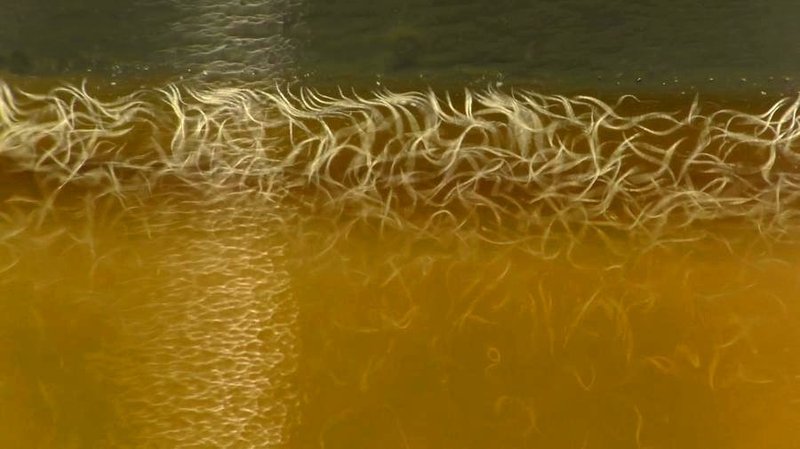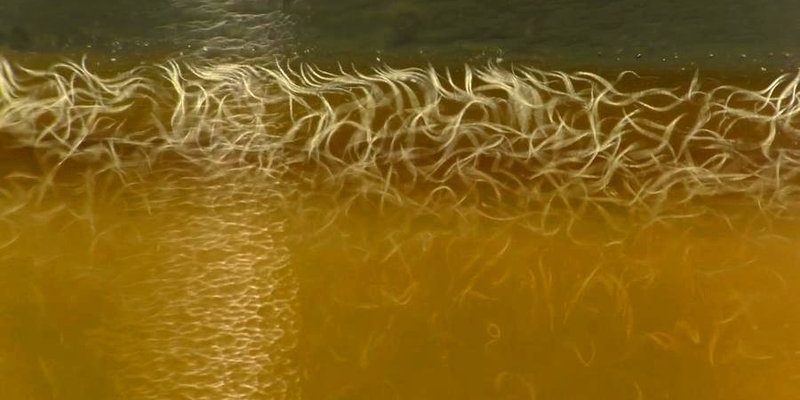
The vinegar eel species, scientifically known as *Turbatrix aceti*, are often overlooked, but understanding their ecological significance can shed light on the intricate web of life. They contribute to the natural breakdown of organic matter, promote soil health, and support various levels of the food chain. If you’re curious about how these unassuming worms fit into our ecosystem and why they deserve more attention, let’s dig deeper.
What Exactly Are Vinegar Eels?
Vinegar eels are microscopic, unsegmented roundworms that thrive in environments with high organic matter concentrations. You might find them in fermented foods such as apple cider vinegar or even in compost piles. They’re about one millimeter long and have a clear, slender body that makes them hard to spot without a microscope.
These little creatures are often associated with the fermentation process, and they feed off the bacteria that grow in those environments. Here’s where it gets interesting: the relationship between vinegar eels and bacteria is like a dance. While the bacteria break down organic material, vinegar eels consume these bacteria, contributing to the nutrient cycling process. They help keep bacterial populations in check, which promotes a balanced ecosystem.
Life Cycle and Habitat
Vinegar eels have a fascinating life cycle that consists of several stages, starting from eggs to adult worms. They reproduce quickly, laying eggs in the presence of plenty of food. Under optimal conditions, these eggs hatch in just a few days. Their readiness to adapt to various environments makes them resilient survivors.
You might wonder where they live. Apart from fermented foods, vinegar eels can also be found in compost heaps and decaying organic matter. They thrive in moist, nutrient-rich environments, which is why they’re so common in backyard composts. Having them in compost not only helps break down waste but also improves soil structure and fertility.
Why Are Vinegar Eels Important for Soil Health?
One of the most significant roles of vinegar eels is their contribution to soil health. They can help enhance nutrient availability, which is vital for plant growth. When they consume bacteria, they help convert this bacterial mass into more accessible nutrients for plants. It’s like they’re little nature’s recyclers, breaking down complex compounds into simpler forms that plants can easily take up.
Furthermore, vinegar eels aid in the aeration of the soil. As they move through the soil, they create tiny pathways that allow air and water to permeate better. This process is essential for root growth and overall plant health. Good soil structure translates to better crop yields and healthier gardens. In essence, vinegar eels are small but mighty gardeners.
Nutrient Cycling and Ecosystem Balance
You might be wondering how vinegar eels influence broader ecological dynamics. Their role in nutrient cycling is crucial for keeping ecosystems balanced. When vinegar eels consume bacteria and organic matter, they play a part in the decomposition process that releases essential nutrients back into the soil.
This cycle is vital for maintaining a healthy ecosystem. Without vinegar eels and similar organisms, nutrient imbalances could occur. For instance, excessive bacterial growth could lead to issues like nitrogen depletion in the soil, affecting plant health and productivity. So, by patiently doing their part, vinegar eels help maintain this critical balance.
Vinegar Eels as Part of the Food Web
Vinegar eels may be small, but they hold a key position in the food web. They serve as a food source for larger organisms, such as nematophagous fungi and certain insects. These relationships demonstrate how interconnected ecosystems can be. One organism’s role often influences dozens of others.
If you think about it, vinegar eels exemplify the saying, “every little bit helps.” By being a food source, they support various species, from microscopic creatures to larger animals. Removing an essential species like vinegar eels can lead to unexpected consequences in the food web.
Impacts on Aquaculture and Fishery Practices
Interestingly, vinegar eels are sometimes used in aquaculture. They can serve as a food source for freshwater fish and shrimp, providing essential nutrients for young or fry fish. These tiny eels can help enhance the diet of these aquatic animals, promoting health and survivability.
In fishery practices, understanding the role of vinegar eels can lead to better management strategies. For instance, maintaining healthy ecosystems with a diverse range of species can improve fish stocks, making aquaculture more sustainable. So, vinegar eels aren’t just useful in gardens—they have their place in water ecosystems too!
Threats to Vinegar Eel Populations
Despite their ecological importance, vinegar eels face threats like pollution and habitat destruction. Changes in land use, such as urbanization or industrial farming, can negatively impact their habitats. Additionally, chemicals like pesticides can disrupt their populations. When vinegar eels decline, the ripple effects can be seen throughout the ecosystem, affecting everything from soil quality to plant health.
Honestly, raising awareness about these tiny creatures is essential. The more we understand their role, the better we can protect their habitats and ensure they continue to thrive. You might not think twice about them as you pour your vinegar, but every drop contributes to the larger picture.
Conservation and Future of Vinegar Eels
As we look to the future, conservation efforts should focus on maintaining healthy habitats for vinegar eels. This includes promoting organic farming practices, reducing chemical inputs, and fostering biodiversity in our gardens and farms. Simple steps, like composting and minimizing pollution, can contribute to the health of these organisms and the ecosystems they inhabit.
Encouraging local awareness and education on the significance of vinegar eels can lead to community-driven conservation initiatives. After all, protecting these small but mighty worms can have lasting effects on soil health and biodiversity. It’s a win-win for everyone.
In summary, the ecological importance of vinegar eels cannot be overstated. From their roles in soil health to their place in the food web, these tiny nematodes contribute significantly to our ecosystems. By understanding their functions, we can appreciate these little creatures as essential players in the larger environmental picture. As you pour that vinegar or toss scraps into your compost, consider the vinegar eels. They might be small, but they play a big role in keeping our world balanced and healthy.

